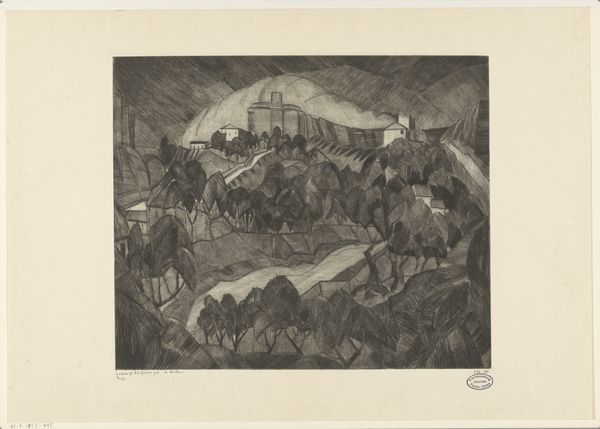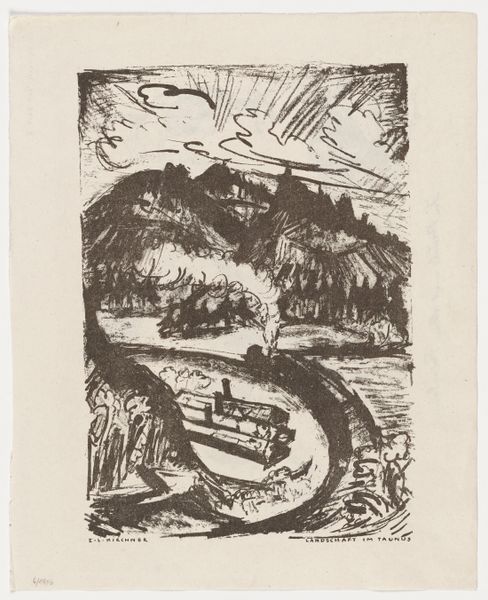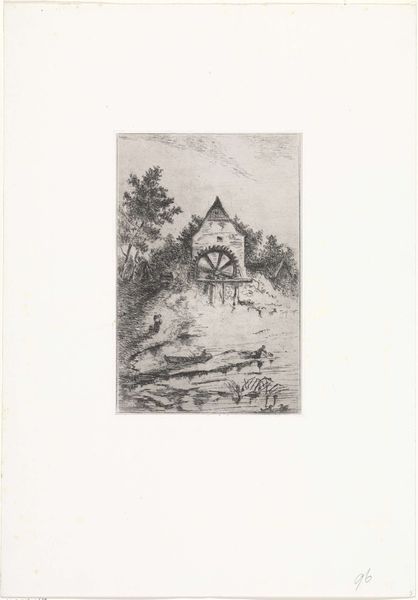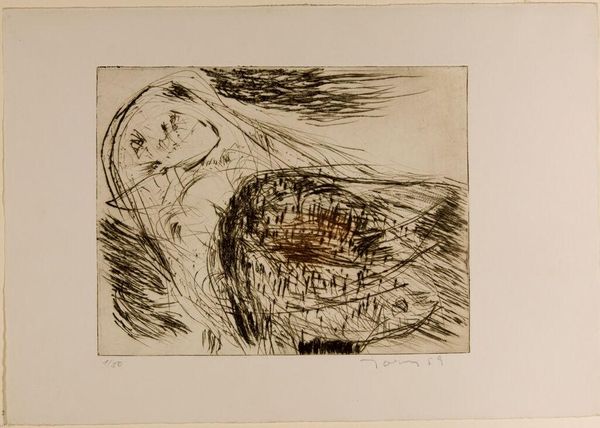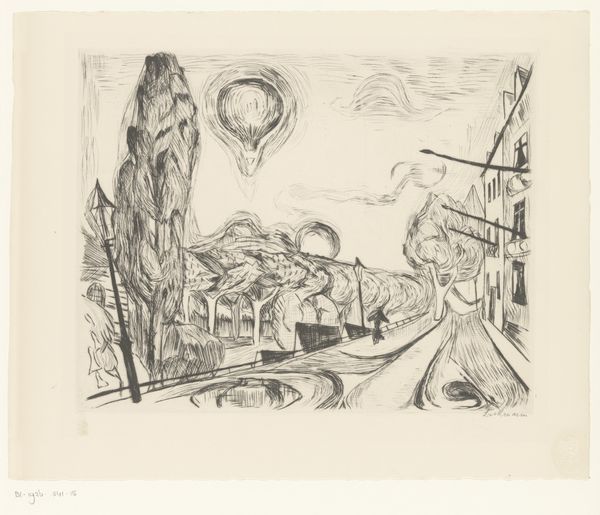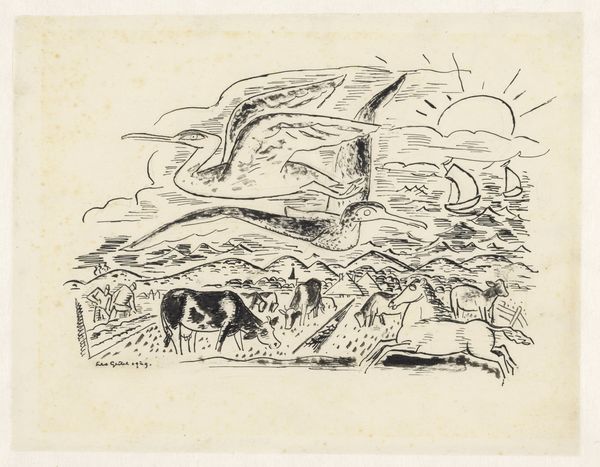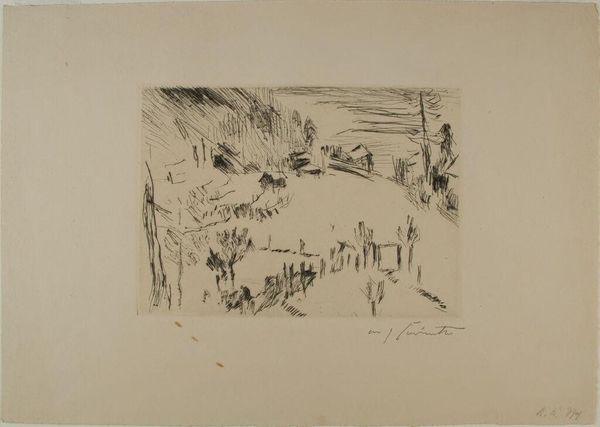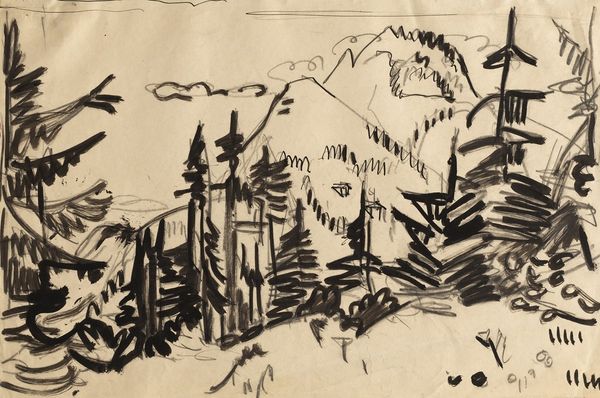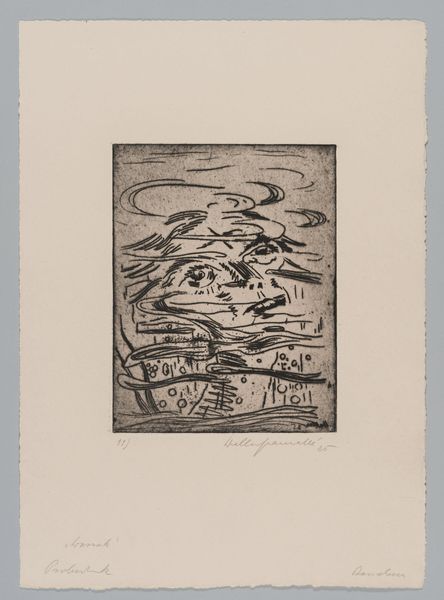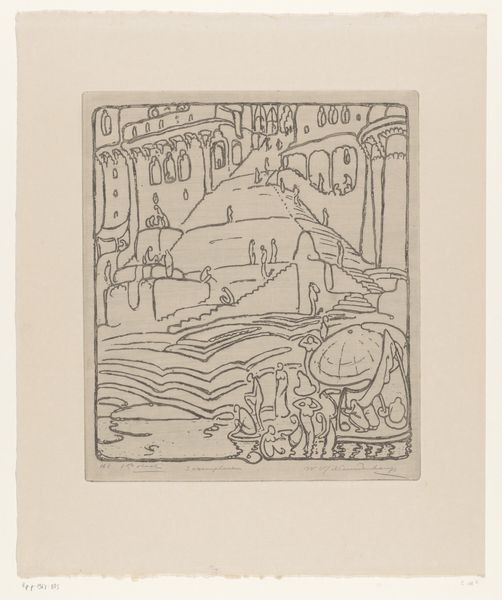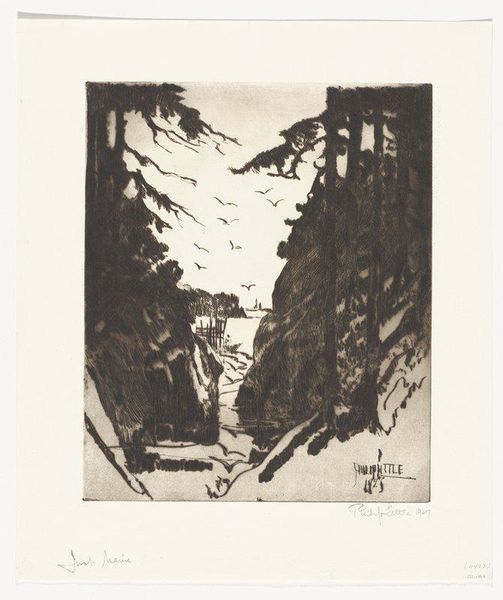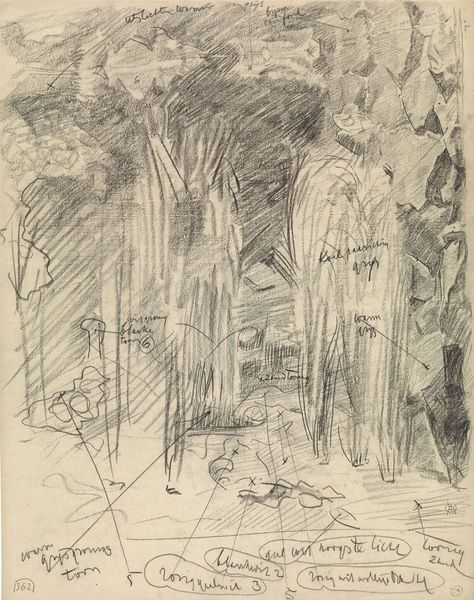
drawing, print, etching
#
drawing
# print
#
pen sketch
#
etching
#
pencil sketch
#
landscape
#
expressionism
#
line
Dimensions: 7 1/16 x 9 7/16 in. (17.94 x 23.97 cm) (image)10 1/8 x 11 3/4 in. (25.72 x 29.85 cm) (sheet)
Copyright: No Copyright - United States
Curator: Ernst Ludwig Kirchner’s 1920 etching, "Landscape With Sheds," offers an interesting glimpse into his exploration of form and emotional expression. What strikes you most about it? Editor: Chaos. Raw, scribbled lines give this work a very visceral, almost disturbed feeling. The subject is simple—buildings in a landscape—yet the execution is turbulent. Curator: Precisely. Consider the use of line. Kirchner employs it not merely to depict form but to convey a sense of unease, wouldn't you say? Note the frantic hatching used to render the mountains; there is very little to denote shading besides dense, chaotic, pen strokes. Editor: Absolutely. And those dense strokes are not simply about form. The lines give away the labor; the frenzied energy expended to produce this image. Look at how much deeper those marks are too in some sections, you can tell he has pressed down into the plate again and again. You sense Kirchner is doing much more than simply observing the sheds and the land. Curator: One could read the composition as reflecting Kirchner's mental state during this period, which was a very challenging one. The angularity of the sheds and mountains echoes a fragmented psychological landscape. The lack of a conventional perspectival structure enhances the sense of disorientation. Editor: I think you are right. Given that etching is an inherently reproducible medium, what are your thoughts about the context in which this particular landscape with its rugged features and signs of isolated human presence, was being manufactured and then presumably purchased? Who would be buying this and why? Was this accessible art? And to what purpose would an owner apply it? Curator: These are valid contextual questions that push us to explore further, especially as Kirchner aimed to use his art to challenge bourgeois complacency, however, there is also no doubting that he himself moved in the elevated echelons of European society at the time. Regardless, Kirchner offers us a glimpse of nature not as picturesque, but as a site of tension, mirroring human internal strife. Editor: So we both seem to be left with a deeper sense of this intersection between psychological interiority and external experience captured within the medium itself. Thank you for this thoughtful discussion.
Comments
No comments
Be the first to comment and join the conversation on the ultimate creative platform.
